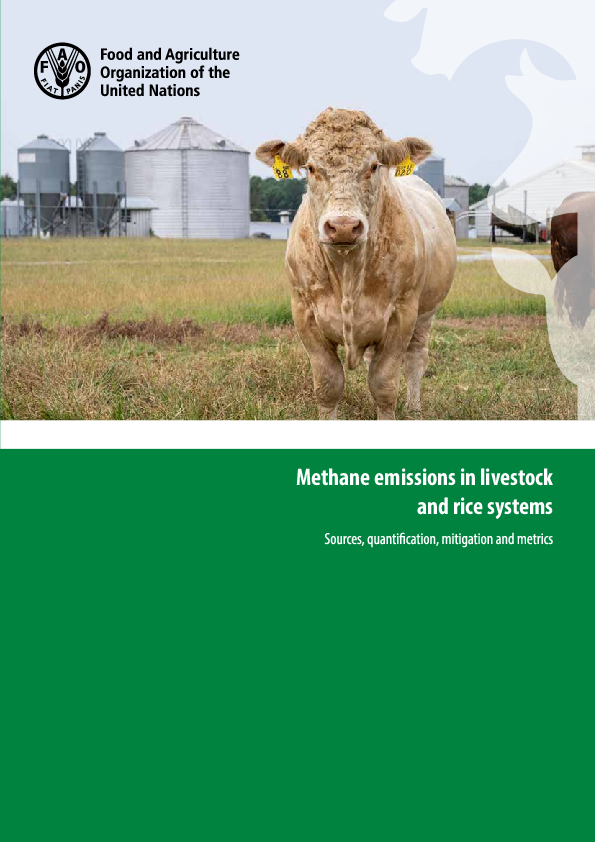 Read this article in French
Read this article in French- Share this article
- Subscribe to our newsletter
Methane emissions in livestock and rice systems
In September 2023, the Food and Agriculture Organization of the United Nations (FAO) published the report Methane emissions in livestock and rice systems. Sources, quantification, mitigation and metrics. The aim is to raise awareness of actions to address methane emissions, and provide the organisations’ members with a menu of solutions.
The paper offers an overview and analysis of methane emissions in livestock and rice systems. It focuses on the sources and sinks of methane gas, describes a broad range of mitigation strategies, and evaluates the metrics that can be used to measure emissions and their mitigation.
Reducing methane emissions from agriculture
Methane accounts for about 20 per cent of global greenhouse gas emissions and is more than 25 times more potent than carbon dioxide at trapping heat in the atmosphere.
Methane emissions from anthropogenic activities currently contribute about 0.5 degrees Celsius to observed global warming, making their reduction an important pathway in achieving the Paris Agreement. The report aims to help agrifood systems contribute their share to the Global Methane Pledge, a non-binding initiative endorsed by more than 150 countries. Meeting the pledge involves decreasing methane emissions by 30 per cent from 2020 levels by 2030. This would mean avoiding more than 0.2 degrees of average global temperature increase by 2050.
Besides agrifood systems, other human activities that generate methane emissions include landfills, oil and natural gas systems and coal mines. About 32 per cent of global anthropogenic methane emissions come from microbial processes that occur during the enteric fermentation (digestion) of ruminant livestock and manure management systems. Another 8 per cent comes from rice paddies.
Enteric methane emissions can vary substantially between animals of the same species. Genetic selection can therefore play an important role, along with dietary innovation in livestock feed.
Methane sinks
Another key environmental factor is how local soils serve as a methane sink. Research summarised in the report indicates that upland forest soils are the most efficient at this, especially in temperate biomes, with storage rates four times higher than cropland. In addition, dry grazing lands have a notably higher uptake rate than moist grazing lands. These findings could point to the merits of sylvopastoral approaches such as that deployed in a Globally Important Agricultural Heritage System in Portugal.
Mitigation strategies
The report discusses a host of currently available mitigation strategies, with a focus on the opportunities and barriers to implementing them in confined and partial grazing production systems as well as extensive and fully grazing production systems. To increase the use value of the review, FAO assessed the strategies in terms of their impact on the reduction of methane production, the emissions per animal product unit, safety aspects and interactions with other greenhouse gases. It also looked economic, regulatory and societal issues that are critical to implementation.
There is also a similar analysis for rice paddy production systems, with an emphasis on bolstering buy-in at all levels of the supply chain so that the burden does not fall only on the primary producer.
(FAO/ile)
Read more and download the report on the FAO website





Add a comment
Be the First to Comment